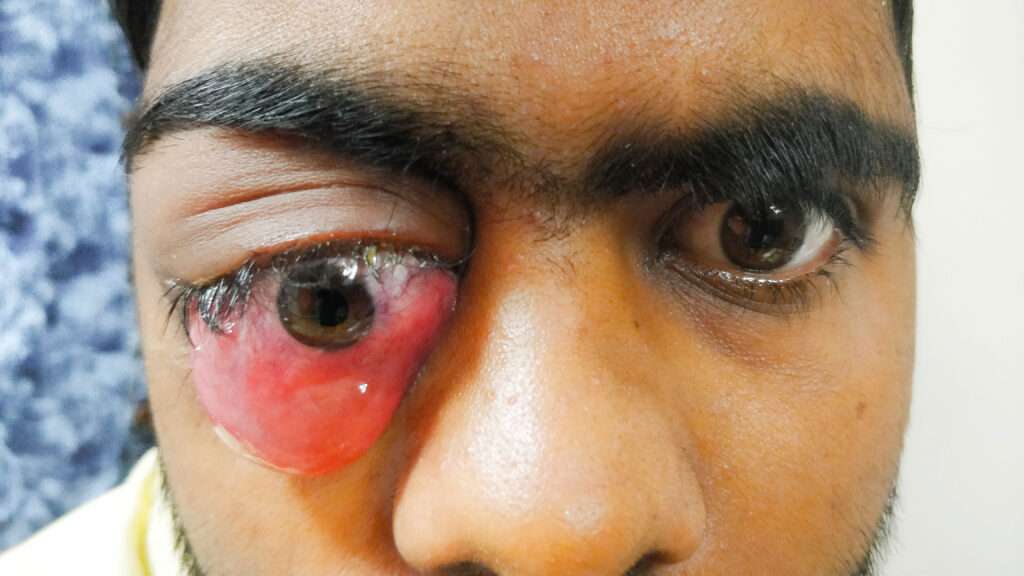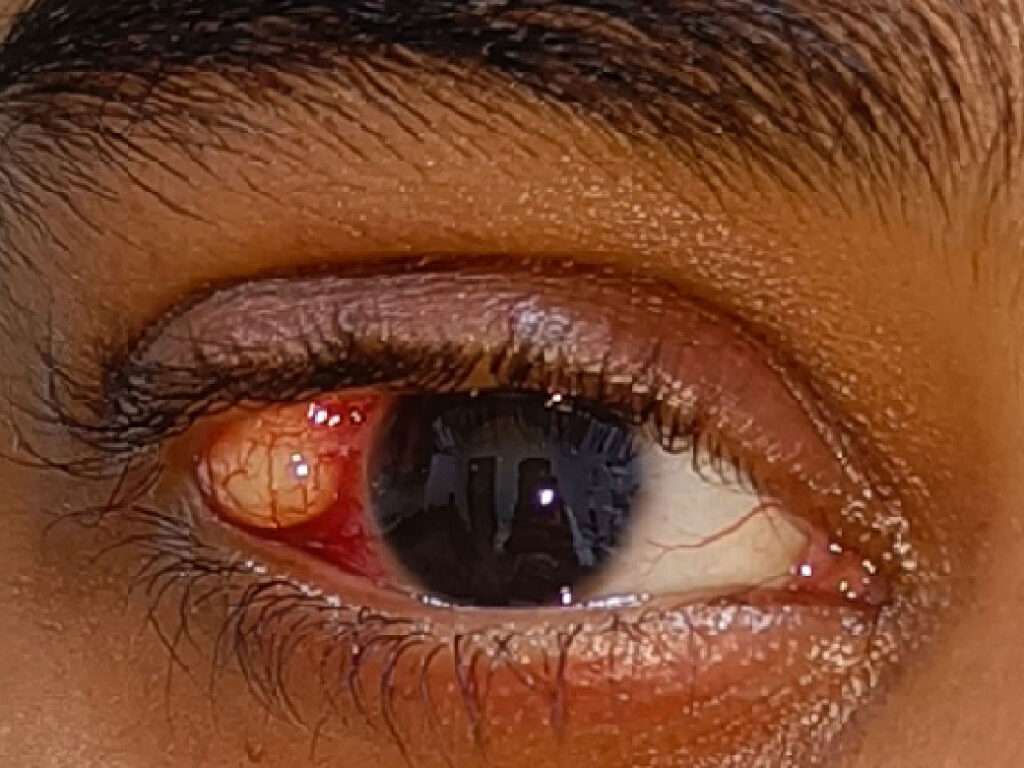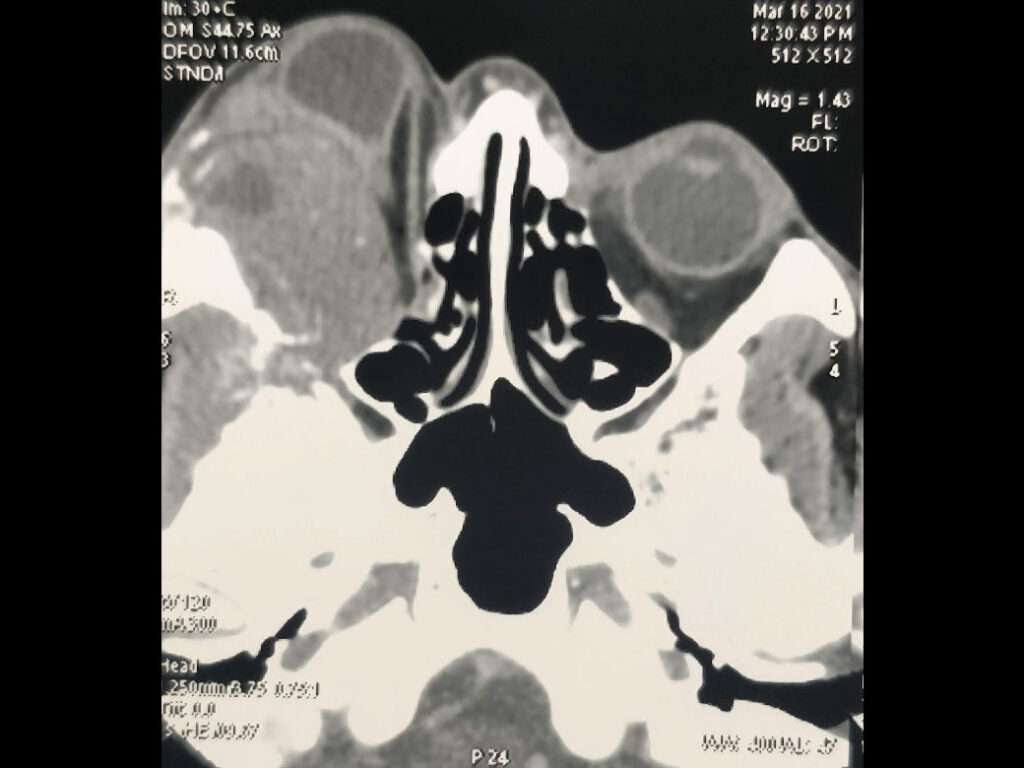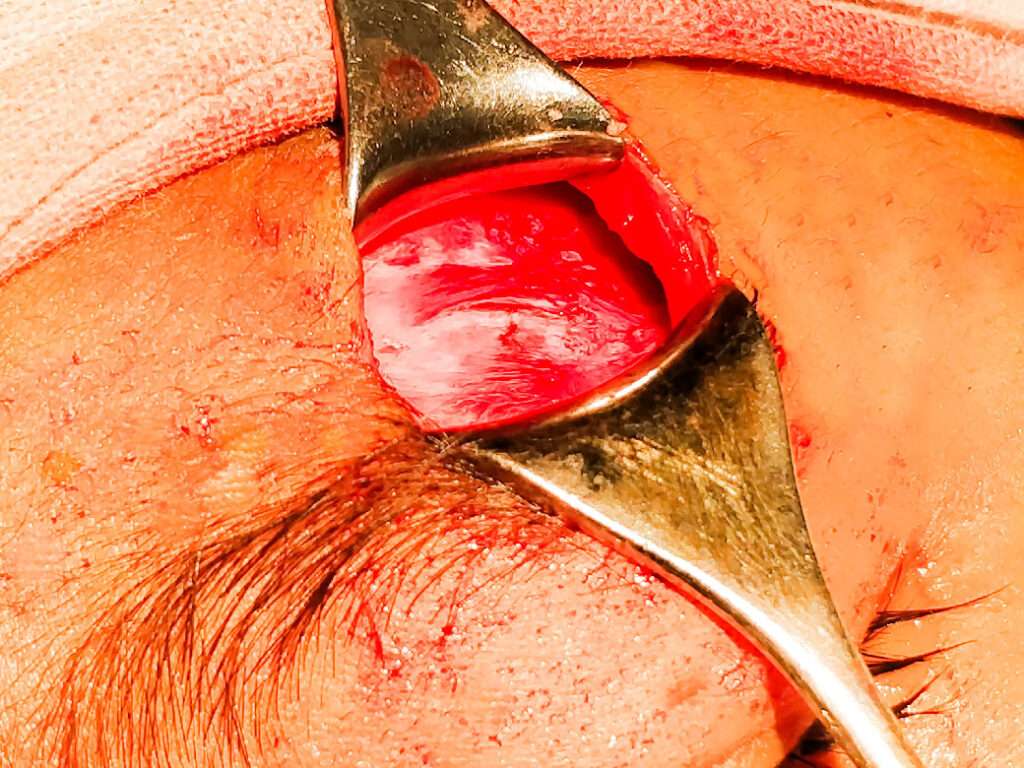
Orbital Inflammation
Q. What is Orbital Inflammation or orbital inflammatory disease?
A. It is defined by the inflammation of the eye or the orbital structure surrounding the eye. As they say, the eyes are the windows to the soul, similarly, orbital inflammation leads us to identify the various systemic diseases which affect our body, namely, thyroid disease, autoimmune disease, TB, COVID-19, etc.
Q. What are the types of Orbital Inflammation?
A. It can broadly classify as Specific or Non-Specific. In Specific orbital inflammation, the cause can be identified and treated subsequently, such as TB, Thyroid, and Autoimmune diseases. Whereas in Non-Specific orbital inflammation, the cause is idiopathic, or the inflammation is restricted to the eye and orbit, and it is treated either by immunosuppression or immunomodulation.
Q. How will my Orbital inflammation be diagnosed?
A. Individuals with orbital inflammation syndrome after complete eye examination may require radio-imaging (CT/MRI) to identify the structures involved and the activity of the disease. Following this, the individual might need an incisional or excisional biopsy (where the complete or a piece of tissue is excised) to diagnose the disease and for its prognosis based on the histopathological evaluation.
Q. What is thyroid eye disease?
A. Thyroid eye disease (TED) is also known as Thyroid Orbitopathy, Graves’ Orbitopathy, or Graves’ Ophthalmopathy. TED is an autoimmune disease where the immune system activated due to thyroid disease misinterprets and attacks the eye tissue and its surrounding structure.
Q. What are the symptoms of thyroid eye disease?
A. TED commonly occurs in cases of hyperthyroidism. But it can even occur if the thyroid levels are high, normal, or even low. Thyroid eye disease symptoms include:
- The grittiness of the eye
- Redness
- Excessive Tearing or Dryness in eyes
- Swelling of the eyelids
- Staring angry looks
- Bulging Eyes
- Pain in the eye at rest or during movements
- Sensitivity to Light
Q. How will my thyroid eye disease be diagnosed?
A. Following the complete eye examination of TED and clinical activity scoring, the individual may be asked for a thyroid profile (which can also be normal in patients) and Radiological imaging (CT scan or MRI) to look for the signs of swelling and inflammation of the eye and orbital tissue.
Q. What are the types of thyroid eye disease?
A. It is broadly classified as active and inactive TED. Based on the signs, symptoms, and clinical activity score, TED is divided into Mild, Moderate to Severe, and Sight threatening. In sight-threatening cases, an individual might develop corneal exposure or optic neuropathy.
Q. What can trigger my thyroid eye disease?
A. TED mostly occurs in the period of 6 months to 2 years from the diagnosis of Graves’ disease. Even if the thyroid levels become normal or even low. In rare cases, TED can be the first sign of thyroid disease.
Smoking or passive smoking affects the TED by worsening the prognosis.
Q. What is the thyroid eye disease treatment?
A. TED requires a multidisciplinary approach by an Oculoplastic Surgeon, Endocrinologist, Radiologist, and Radio-Oncologist. The main treatment is to control thyroid levels. During the active TED phase, the individual is treated with
- Lifestyle Modification – Avoid smoking, treat sleep apnea, and regular exercise
- Medications – Artificial Tears
- Immunomodulation – Low dose steroid pulse therapy, immunomodulators
- Orbital Radiotherapy
Whereas during the Inactive TED phase, the treatment is performed for rehabilitation in the following sequence
- Orbital Decompression in sight-threatening TED as an emergency or in bulging eyes
- Squint Surgery for Double vision
- Eyelid Surgery
- Aesthetic/ Cosmetic Surgery







